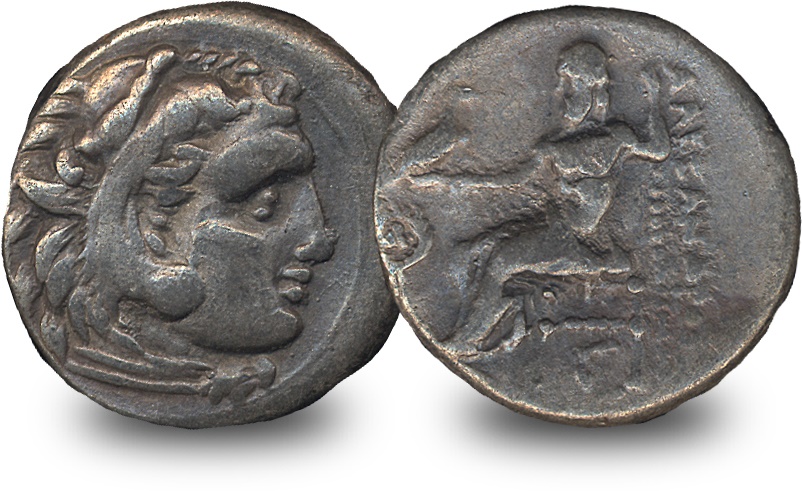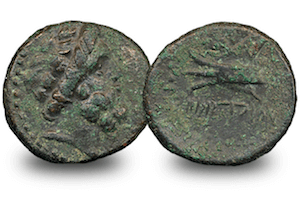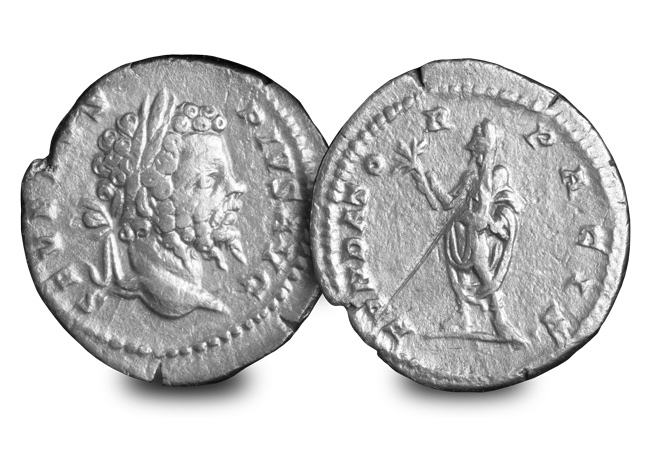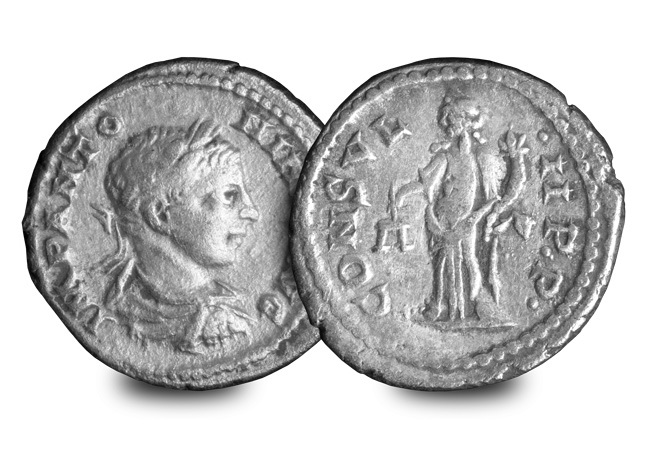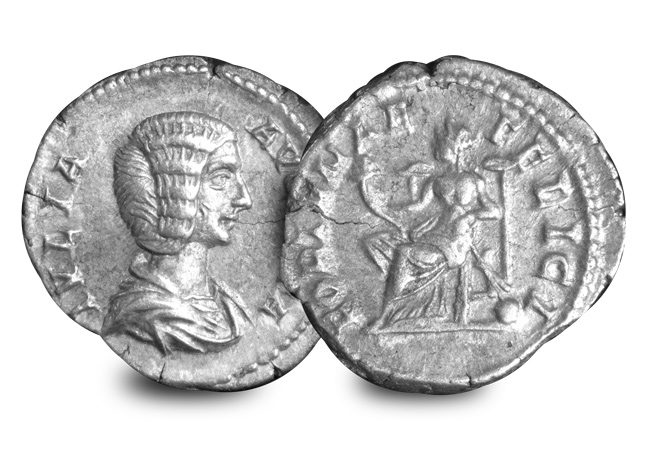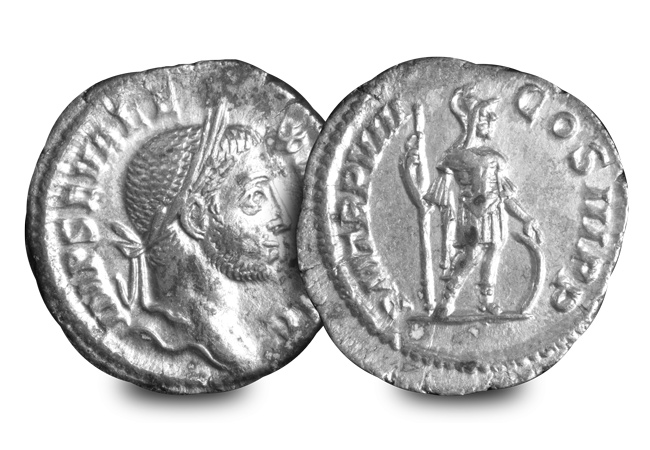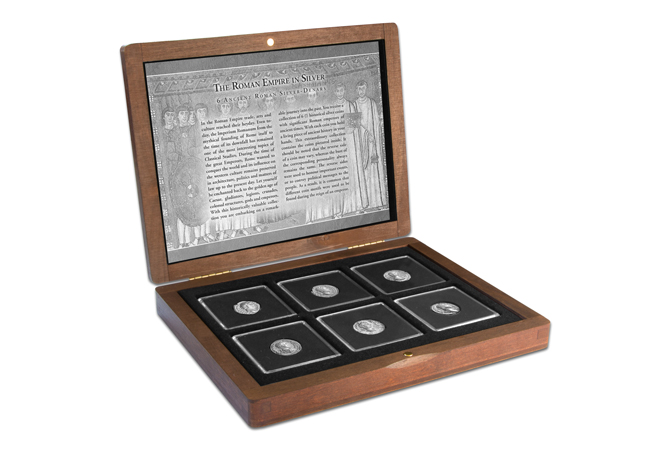Posts Tagged ‘ancient coins’
The coins which built Ancient Rome: yours for JUST £40 (+p&p)
Today you have the chance to secure an original coin from Ancient Rome for just £40 (+p&p).
Sought-after by collectors across the globe, these storied coins belong in everyone’s collection.
Read on to find out more about the myth which built Ancient Rome, the fateful tales of Roman Kings, and how you can secure a coin which could have passed through the hands of Emperors.
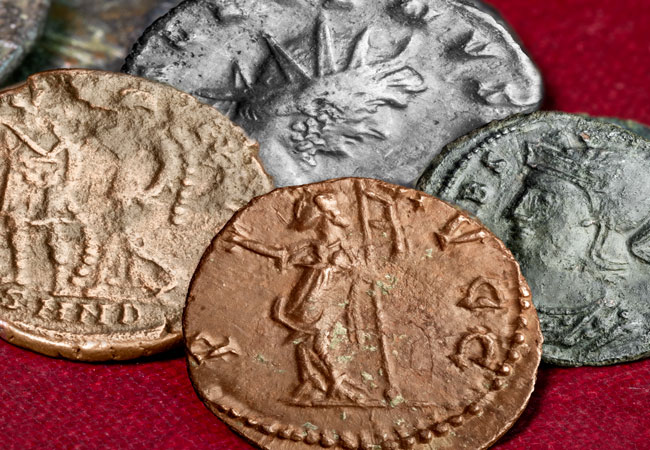
The Myth of Romulus and Remus
During a time shrouded in legend and myth, there lived two brothers named Romulus and Remus. Their story is at the heart of the founding of one of the greatest civilisations in history: Ancient Rome.
Romulus and Remus were born to a princess named Rhea Silvia and the god of war, Mars. Their grandfather feared their potential power and ordered them to be abandoned in the wilderness. But fate had other plans for the twins; they were discovered by a she-wolf, who raised them as her own.
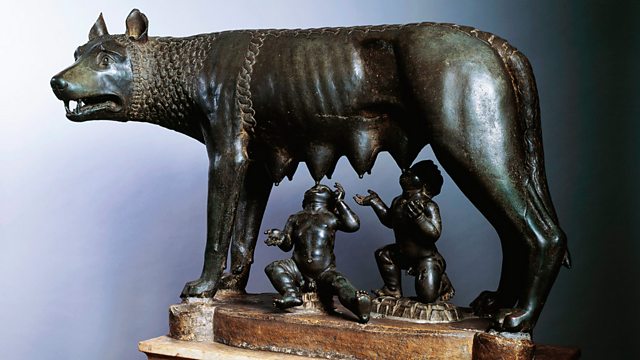
As Romulus and Remus grew older, they learned of their royal lineage and the circumstances of their birth. Filled with a desire to reclaim their rightful place, they set out to establish their own city.
Legend has it that the brothers disagreed on where to build their city. Romulus favoured the Palatine Hill, while Remus preferred the Aventine Hill. To settle the dispute, they consulted the gods through a divine sign – birds flying overhead. The disagreement continued, so the brothers began to build separate cities.
But one fateful day, Remus decided to visit his brother Romulus, mocking the modest walls of Romulus’s budding city. In retaliation, Romulus killed his brother to defend his city’s honour. Undeterred by the tragic incident, Romulus continued with the construction of his city, eventually proclaiming himself as its rightful king in the year 753 BC.
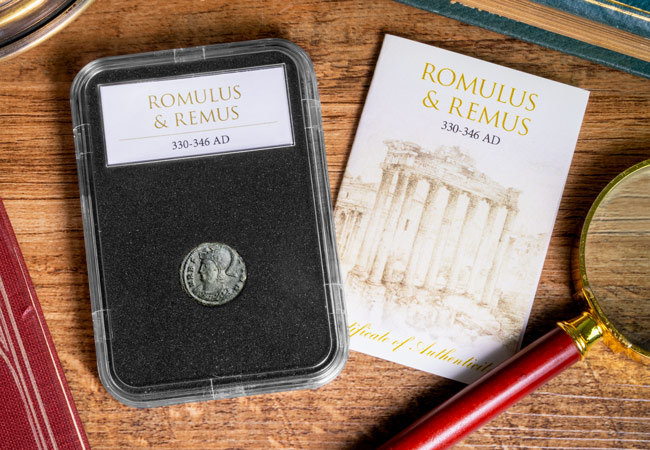
Kings of Rome
As Rome grew, it became a thriving civilization, eventually evolving into a powerful empire that would shape the course of history for centuries to come.
All rulers after Romulus were elected by the senate, and there are seven legendary kings of Rome: Romulus, Numa Pompilius, Tullus Hostilius, Ancus Martius, Lucius Tarquinius Priscus (Tarquin the Elder), Servius Tullius and Tarquinius Superbus, or Tarquin the Proud (534-510 B.C.).
However, there are other notable Kings such as Julianus who was killed when the Danube legions invaded Italy, and proclaimed their principal commander, Lucius Septimius Severus, emperor.
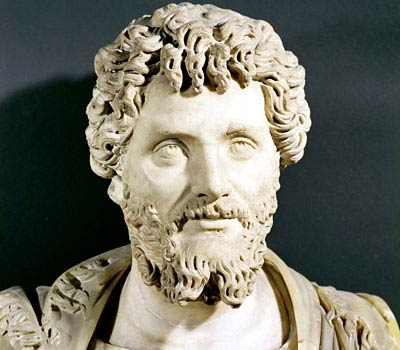
Genuine Coins from Ancient Rome for JUST £40 (+p&p)
The Westminster Collection are now offering a limited number of collectors the chance to secure a genuine coin from Ancient Rome in an exclusive lucky dip.
This guarantees you will receive a genuine Ancient Roman coin issued during the reign of a Roman king housed in a tamperproof capsule, accompanied by a certificate of authenticity.
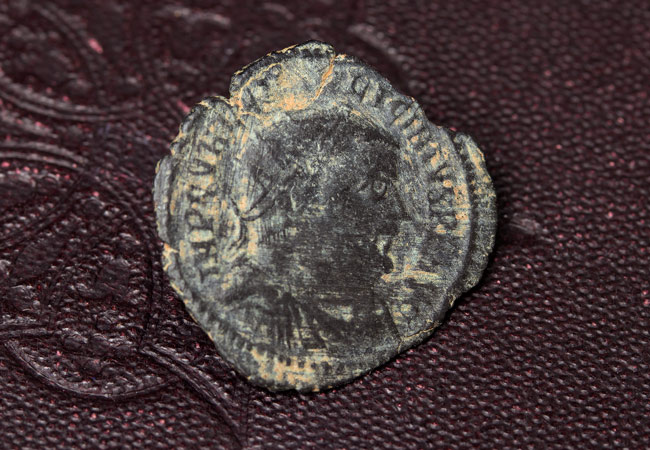
And considering these sought-after ancient coins are being offered at such a competitive price, demand is expected to be high.
Click here to secure your original Ancient Roman coin before it’s too late >>
The coins behind the Ancient Greek myths…
Ancient Greek civilisation provided the foundations for Western culture. One of the empire’s most recognised legacies is Greek mythology, which had an extensive influence on arts and literature in the West. Greek myths tended to describe the lives of Greek Gods including their births, victories in battle, love affairs and their connection to certain city-states.
One artifact which pays homage to Greek mythology is Ancient Greek coinage. Greek currency was the first to be minted on an imperial scale and has influenced commerce across the world.
Coins were hugely important as a medium of exchange and an important store of value and source of prestige. Greek coins used a combination of figures, symbols and inscriptions to symbolise each ruler’s territory. Each city state in Ancient Greece was said to be protected by a certain character from Greek mythology and one of the most identifiable features of Greek coinage are the Gods and Goddesses which are struck on many of the coins of the time.
I have taken a look at some of the most famous myths that were struck on coins from the time, some over 2,000 years old!
Zeus ‘King of the Gods’
Issued in the 2nd century BC this coin depicts Zeus the chief of the gods and believed to be the ruler of mankind. It’s believe that Zeus saved his brothers, Poseidon and Hades, after they had been eaten by their father Cronus. The three of them divided creation between them. As the Father God, Zeus was the dispenser of good and evil and the upholder of morality.
Hercules ‘Son of Zeus‘
Alexander the Great often issued coins depicting himself dressed as Hercules, wearing a headdress made of the scalp of the Nemean lion – one of Hercules’ “12 tests”. Hercules is famed for being the strongest of all mortals. However, his physical power was offset by a lack of intelligence and strong emotions. Many of Hercules’ great deeds occurred while doing penance for stupid acts done in anger or carelessness.
Apollo ‘God of Music’

The Ancient Greek Apollo ‘God of Music’ Coin
This coin is an example of one of many coins issued depicting Apollo, the son of Zeus. Apollo is considered a complex god of many things including music, poetry, art, oracles, archery, plague, medicine, sun, and knowledge. He is often depicted playing the lyre and is represented as an ever youthful god.
Ares ‘God of War’
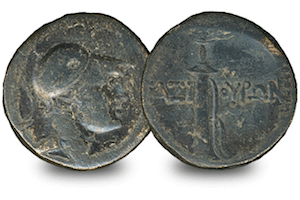
The Ancient Greek Ares ‘God of War’ Coin
Issued in the 1st Century BC this coin depicts Ares, the God of war and violence. Fittingly the reverse of this coin features a sword. Ares was a superior fighter in battle and caused great bloodshed and destruction, but he also had a reputation for being cowardly.
The Dioscuri ‘Patron Saint of Sailors’

The Ancient Greek Dioscuri ‘Patron Saints of Sailors’ Coin
This coin features the Dioscuri; the twin brothers of Castor and Pollux. Pollux, the son of Zeus, was immortal but Castor was mortal. When Castor was murdered, Pollux asked his father Zeus if he could share his immortality with his brother. So they transformed into the constellation Gemini, able to travel back and forth between Olympus and Hades. They are also known as protectors of sailors, able to calm the seas and winds in storms.
Gorgon ‘Medusa’

The Ancient Greek Gorgon ‘Medusa’ Coin
Medusa was the only mortal of the three powerful winged Gorgon sisters. It is believed that Medusa was transformed into a monster by Athena. Medusa’s hair was made of snakes, although it is depicted as wild leaves on this coin, and she was said to be able to turn people to stone with a glance. She was killed by the hero Perseus, who used the metal of his shield as a mirror to avoid eye contact with Medusa.
Histiaea ‘Patron Saint of Histiaea’

The Ancient Greek Histiaea ‘Patron Saint of Histiaea’ Coin
This small silver coin is known as a “tertobol” and weighs just over 2 grams. It pictures Histiaea, the nymph, on both the obverse and reverse. Histiaea was named after the ancient city of Histiaea on the second largest Greek island, Euboea. Mythical Naiads lived in the lakes here and being immortal, were invited to the assemblies of the gods on Mount Olympus.
Poseidon ‘God of the Sea’

The Ancient Greek Poseidon ‘God of the Sea’ Coin
Poseidon was worshipped as the god of the sea, earthquakes and horses. Poseidon is often portrayed with his best known weapon, the trident, which he used to shake the earth and create storms, causing devastating earthquakes and tsunamis. It is this trident that is featured on the reverse of this coin. The coin was issued by the Syracuse in the 3rd Century BC, as Poseidon was greatly important to them as a maritime city/state.
Tyche ‘Goddess of Cities’

The Ancient Greek Tyche ‘Goddess of Cities’ Coin
Tyche was the personification of fortune and controlled the luck and prosperity of a city. On this coin she is depicted with a crown of city walls and the reverse depicts a cornucopia, a symbol of good fortune. Tyche was said to have carried a large horn containing riches, which she would sporadically spread to individuals and cities. When no cause could be discovered for events such as floods, droughts or political upheaval, they were often attributed to Tyche.
If you’re interested…
Now you have the chance to own The Zeus ‘King of Gods’ Bronze Coin, which is over 2000 years old. How many people can say they own a piece of ancient history whose story has had such impact on the world today?
So if you want one, click here for details before they sell out.
The coins behind 6 of the greatest Roman Emperors
One of the first actions of any new Roman Emperor was to strike coins bearing their image. Distributed to the far corners of the empire, coins acted as propaganda and legitimised the rule of new emperor, whether they gained power through means fair or foul.
Each of the emperors of ancient Rome has a story. Some are remembered for being strong, some were crazy and some completely despised. I’ve put together a list of 6 of the most significant rulers in the history of ancient Rome alongside one of their coins…
Antoninus Pius
Often referred to as the “calm before the storm”, Antonius Pius enjoyed a long reign. His reign was considered the last extended period of peace prior to his adopted son Marcus Aurelius, coming to power on the day of his death. Antonius Pius was considered modest, austere and well-educated and his reign was characterized by peace and economic recovery, he died a very popular man.
Septimius Severus
The founder of the Severus dynasty, Septimius Severus enjoyed an extensive education and spoke several languages. He was proclaimed emperor by his troops after the violent death of his predecessor and managed to rule unchallenged for 18 years. It is thought that the decline of the Roman Empire began with Severus. Following his death in Britain he was exalted to the level of a God by the Senate.
Caracalla
Caracalla succeeded as Roman Emperor following the death of his father Septimius Severus, however he had already been elevated to the position of co-ruler as early as the year 197. Caracalla and his brother Geta had initially reigned jointly, however Caracalla arranged for his brother and all his brothers followers to be murdered, assuming sole regency over the empire. It’s fair to say that Caracalla was not a popular ruler among Rome and while on a pilgrimage he was murdered in an ambush by his own soldiers ending his forceful reign.
Julia Domna
Julia Domna was the second wife of Septimius Severus and mother to two sons, Caracalla and Geta. She accompanied her husband on his campaigns in the east of the Empire and was very much respected, the indication being that her portrait featured on coins. However it wasn’t all plain sailing and she suffered greatly due to the strife between her two sons. She lived to witness Caracalla murder his brother Geta, the same year her husband died. Following her own death, she was also elevated to the rank of the Gods.
Elagabalus
The reign of Elagabalus was scandalous to say the least. When his cousin Caracalla was murdered, his mother passed him off as Caracalla’s illegitimate son, winning the support of the nearby soldiers. His original name was Varius Avitus Bassianus but became generally known as Elagabalus because of his earlier role as a priest of the sun God of that name. Just like his predecessor, Elagabalus too suffered a violent death. He was slain by his own guards along with his mother and thrown into the Tiber when the false claims of his legitimacy came to light.
Alexander Severus
Alexander Severus was appointed Emperor at the tender age of 13 but the dominant ruler was actually his mother, Julia Mamaea. She saw to it that her son received a good education but deprived him of any powers. Gradually the lack of an emperor’s presence in the army dwindled and he too was faced with a violent demise. Eventually, Alexander and his mother were murdered by mutinous soldiers serving under Maximus Thrax, the self-proclaimed new emperor. With the death of both mother and son, the Severus dynasty ceased and the era of soldier-emperors commenced.
It’s hard to imagine living in a time as brutal as the stories behind these Emperors of ancient Rome. The golden age of Caesar, gladiators, legions and colossal structures.
Now you have the chance to embark on a remarkable journey into the past with this collection of 6 historical silver coins. Nothing can bring to life history like coins from time gone by and with each coin, you can hold a living piece of ancient history in your hands.


